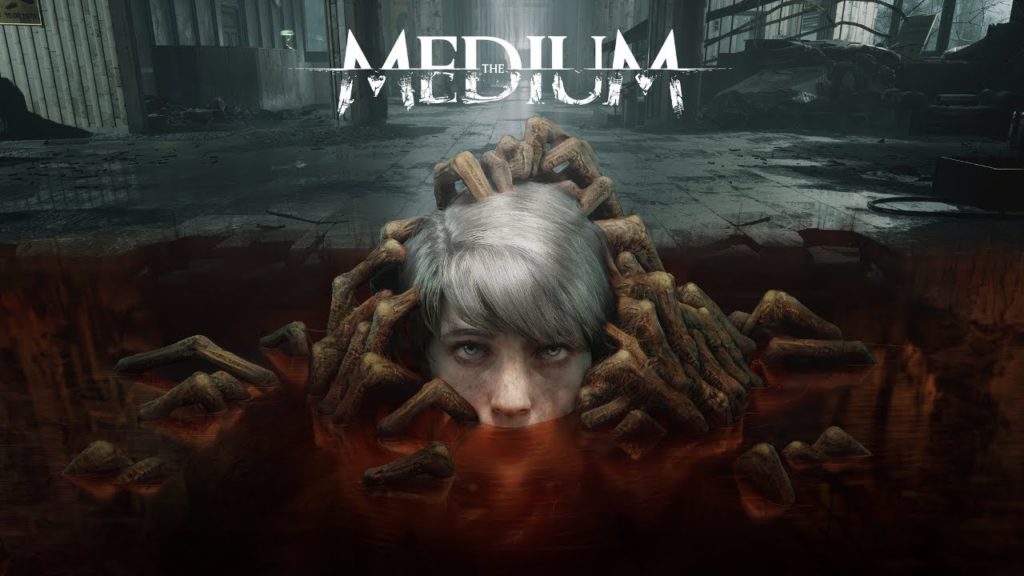The Medium
Over the last year, I have gotten used to this song and dance of play game, think about game, review game. Another thing I had gotten used to was the narrative-driven horror game genre, with games like Amnesia: Rebirth and Transient gracing my eyes with their subpar and bad presences, respectively. As a fan of SOMA, I keep looking for the next game to be the successor of the best horror story-line in my brain. Since Rebirth disappointed me to no end, I look to another horror developer, whose recently released game seemed to have potential. Does The Medium have what it takes?
The Medium is a narrative-driven psychological horror game developed and published by the Poland-based studio Team Bloober. Using the likes of Akira Yamaoka to co-compose their experience, some have likened it to Silent Hill. I haven’t played any Silent Hill games, as it was only something I would watch people play, so my experience is through osmosis alone. That being said, let’s continue.
One thing I want to mention about this story, because Bloober neglects to mention this specifically, is that it deals with some major topics, including sexual abuse against a child, genocide, and mental illness. It handles these topics like plot devices; a means to an end that isn’t treated as seriously due to the actions of its characters.
It All Starts With A Dead Man
The Medium puts you in the role of Marianne, a medium with the unique ability to split her body between the real world and the spirit realm. As we first meet her, she is in grief over the death of her foster father, Jack. On the day she put him to rest, she receives a phone call from a man named Thomas. He offers an explanation for her abilities and the dreams she’s been having, but only if she comes to the abandoned Soviet-era Niwa Resort. Spurned by the desire to learn her origins, Marianne sets off to this mysterious locale.
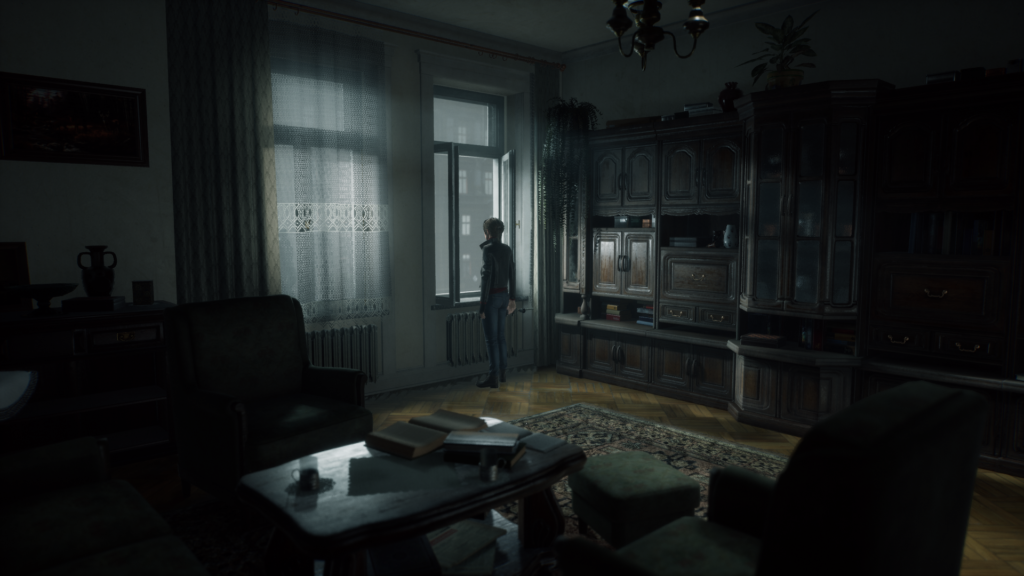
The story of The Medium is pretty underwhelming. Even if it didn’t have the poor treatment of its themes, I would think this. The main character had her charm, but I didn’t connect with her all that much to care. Of the seven to eight hours I played it, it seemed like only four of them meant something to the story, and the rest was pointless meandering, making it all feel disjointed almost. There are two segments that, although interesting in environmental design, provide nothing to the story other than the context around those who are at fault for the events of it.
Furthermore, The Medium introduces some interesting concepts and ideas, with possibly one or two of them paying off in the end, but to barely any decent degree. There were so many directions the story could go, but it went in a rather boring one whose end was as flat and jarring as some of the textures I saw popping in.
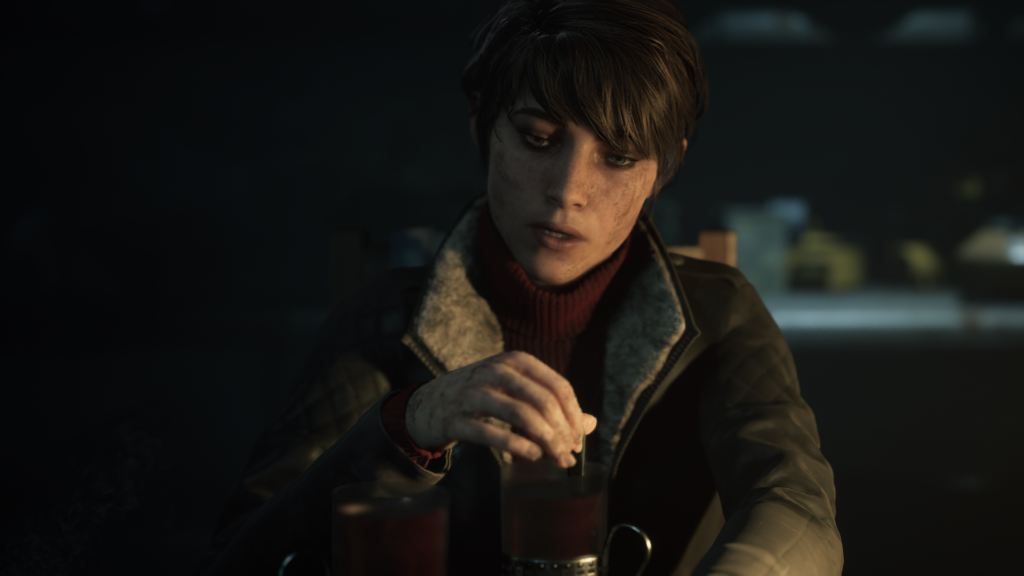
In addition to all this, one of the major gripes I had with the game was the voice cast. This game takes place in Poland, with people who are supposedly Polish, but they all have American accents, including one with a Texan twang. It all makes the story beats hit just a little bit less as it just takes me out of it. Not only that, but there isn’t any option for Polish language with English subtitles, just an English voice localization. This was bizarre, considering Bloober is a Polish team. The English voice cast was fine, not great, but I feel like I could immerse myself in the story more if they sounded like where they were.
Familiar Angles
One thing to commend them for, however, are the stunning visuals in the environments. Bloober is used to doing first person games, so seeing them out of their element and trying fixed camera angles, simulating those of Silent Hill, was refreshing. In fact, I would say they did well enough with their shot comprehension, though I did have problems with navigating from time to time.
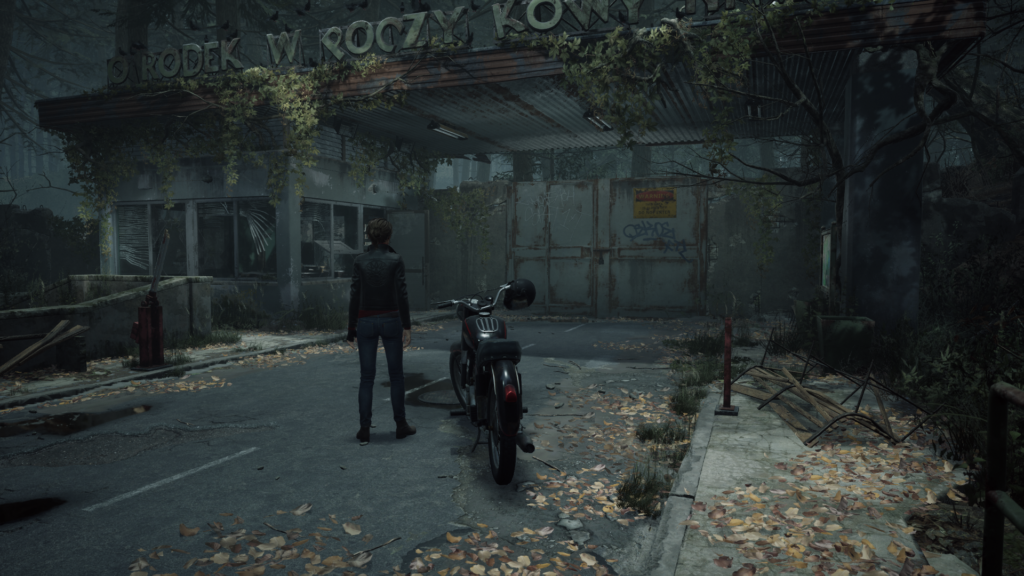
Nonetheless, using fixed camera angles did help bring out the detail of the environments, whereas first person only made us focus on what was in front of us. There is much detail put into both the real world and the spirit realm, giving life to a dead place. Not to mention the intriguing sights to see that only further emphasizes the bizarre nature of Marianne’s world. This is only heightened by the use of ray-tracing that, although not used as much, does add a little flare to what are already gorgeous scenes.
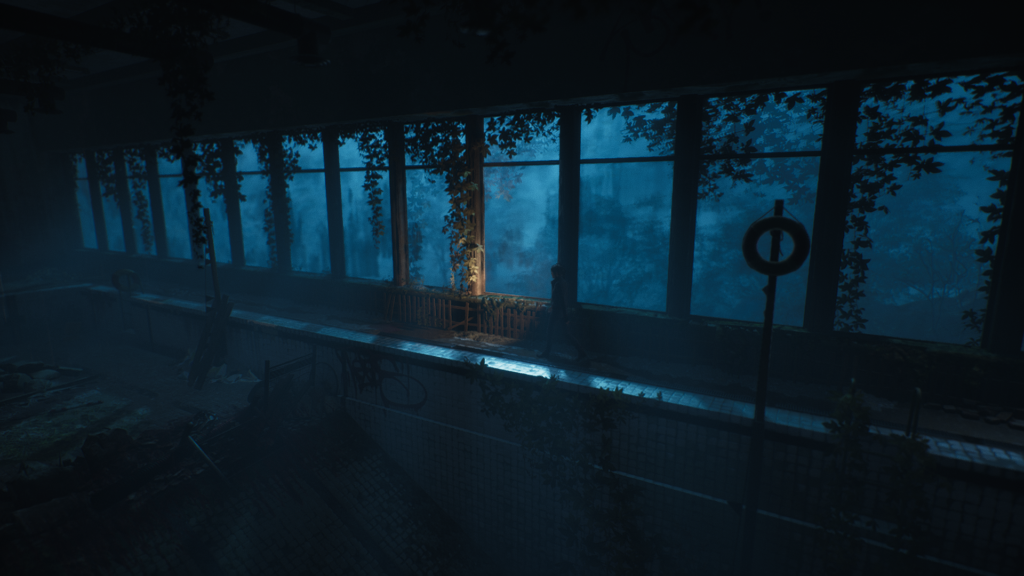
All that pretty does come at a price however. They focused so much on making the game look good that they neglected to make it run good. Throughout the entire game, I would have some moments that completely drop the framerate. Turning on DLSS did improve this, and even allowed me to use normal raytracing, but I could still see the game chugging along. This, along with Marianne’s slow movement speed, did make the game feel sluggish to control. All this sounds bad, but it only gets worse as the game’s major gimmick comes into play.
Between Realities
One of the more prominent bullet points of The Medium was this “dual-reality” mechanic, where Marianne is split between the real world, and the spiritual one. In this mode, you control Marianne in both worlds, and thus solve puzzles while in this split. There will be items only attained in the spirit realm that will help you in the real world, and vice versa. If there’s an obstacle in Marianne’s path in the real world, she can’t traverse it in the spirit world unless she activates her “out-of-body” ability that allows her spirit self to continue further for a limited time.

While this does sound interesting as a game mechanic, I would say Bloober fumbled a bit when implementing it. Obviously, when rendering two worlds at the same time, the framerate will tank and force you to change some settings to accommodate this drastic switch. These changes will even happen mid-cutscene, causing you to stop the story just to make things run better.
But Only Sometimes
They also didn’t make it feel as much of an important mechanic as they advertised it to be. It’s used in probably half of the puzzles Marianne comes across, and then designated to cutscenes, where half of the screen is taken up by Marianne looking insane, while the other half actually has something happening in it.
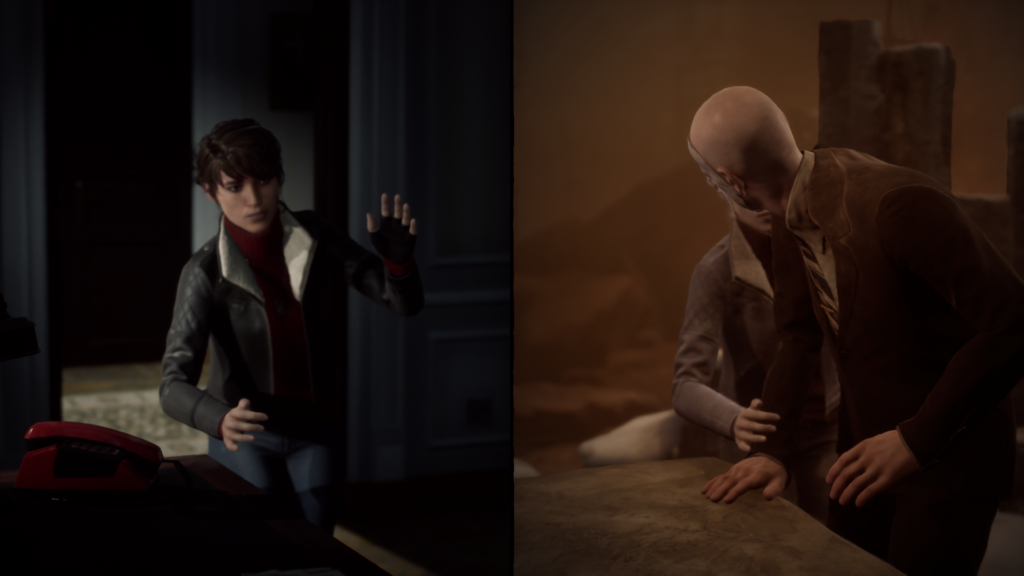
The first time they did this felt appropriate, as it showed us why people thought she was crazy for most her life. And then there was a cutscene where you actually see things being affected in the real world due to what’s happening in the spirit world. The rest of the game, however, didn’t need it, as what’s important to the story is only happening on one screen, and thus doesn’t need to take up not just half the screen, but half the processing power as well.
Now, I’ll admit they did some interesting things with the mechanic, but they didn’t use it as much as I was expecting. In fact, I expected most of the game to be like this, where there was puzzle after puzzle to get through thanks to the use of Marianne’s ability. While it did come into play more often than not, I can’t help but sit here, staring at this document, and remembering that it didn’t feel as used due to the two segments I spoke of previously padding the experience out, showing abilities that are never used again.
Run of the Mill
Outside of that, the game acts like the average narrative-driven horror game that Bloober is so used to, if made unique by a now rarely-used camera perspective. When not betwixt dual realities, you’ll either switch between them with mirrors or just remain in one of the two realms.
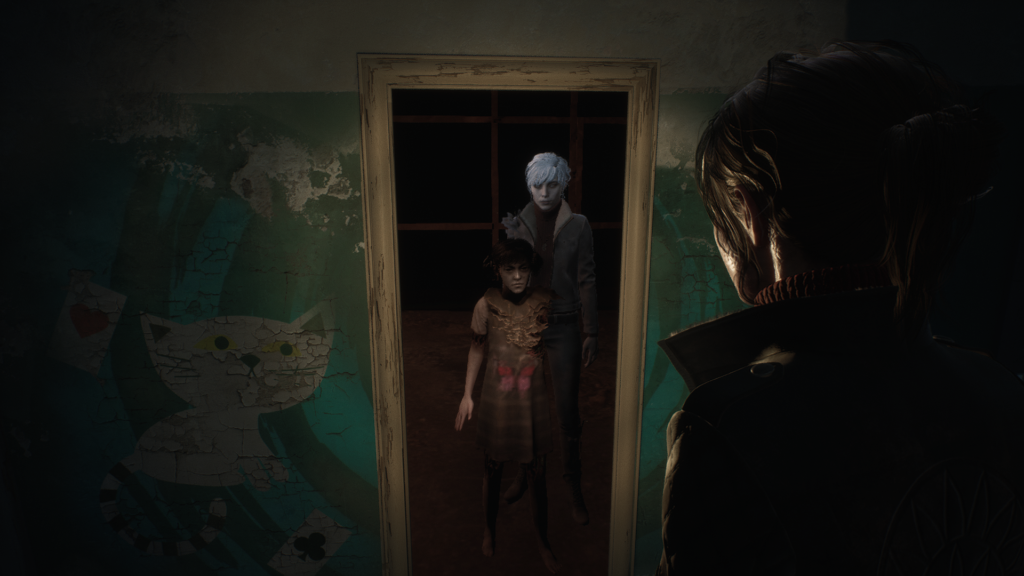
The gameplay loop consists of exploring areas, finding memories of the past, reading arbitrarily placed documents, solving puzzles, and hiding (or running) from The Maw, an enemy spawned from some tragedy that still haunts the resort. The former four are the usual, if only made different by the use of Marianne’s smaller abilities like Insight. The puzzles aren’t difficult at all; the only time I actually felt stumped was because I forgot Insight was a thing I could use.
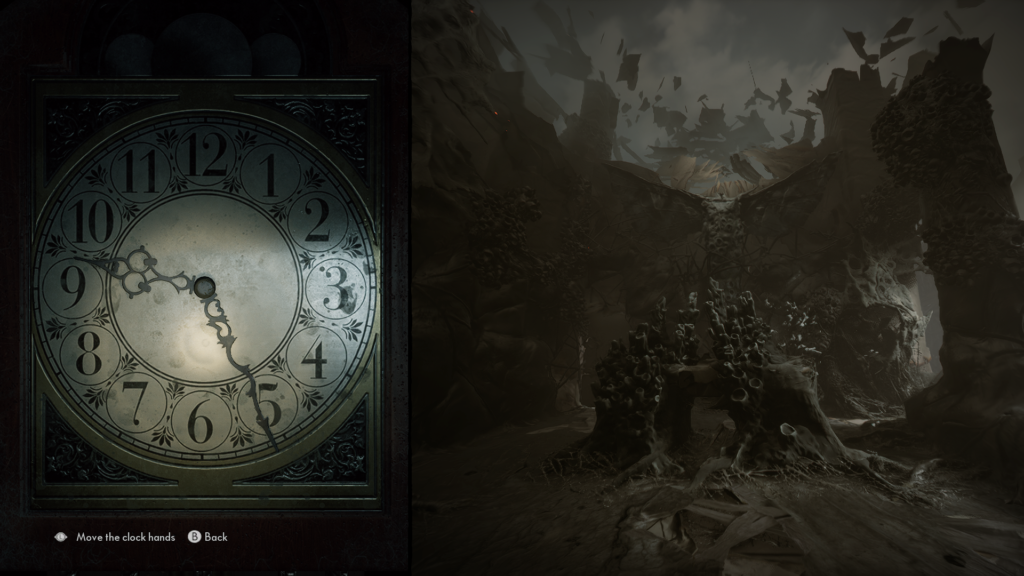
In the latter, the hiding and running segments, I didn’t find them all that enthralling as they were pretty easy to get through, even when The Maw is invisible in the real world, since you can hold your breath to keep him from spotting you. I would say what made it a little bit hard were the cinematic camera angles screwing with my navigation, but that was it.
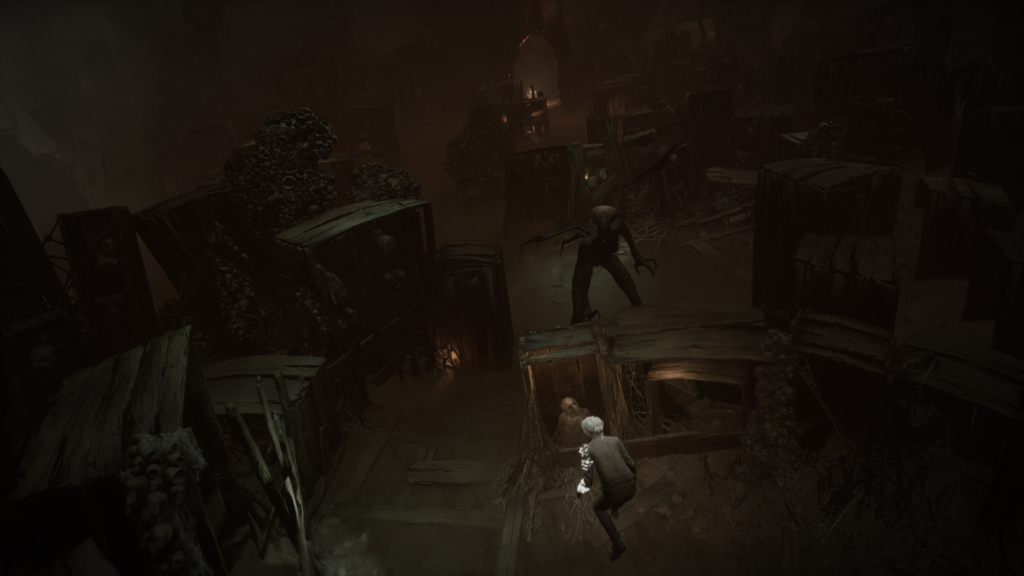
As an overall experience, the gameplay of The Medium did some things well, and other things not as well. You could see potential in the dual reality gimmick, but it never quite reached it. I can’t say it was bad, because when you were exploring around, solving puzzles, and hiding from the enemy, you were being immersed in the atmosphere of the moment.
Hearing The Dead
The sound design does a great job adding this sense of dread to the resort. With all these sounds around you, you can’t help but know that whatever happened here is still haunting the grounds to this day. With assistance from the detailed environments, The Medium creates an experience that is sure to dazzle your visual and auditory faculties.

What enhances this experience more than it has any right to is the unique soundtrack co-composed by Akira Yamaoka. He seems to make some of the most interesting music for horror games, it’s almost a crime he isn’t hired to be a composer for more games. If there is one aspect of The Medium that is absolutely at the top of things to praise, it’d be every song that Yamaoka composed.
Small Problems
Now, besides what I’ve listed, there were some technical problems I came across, namely the staggering amount of texture pop-in. Every time we switched to another view, you’d have to wait an extra second just to see the detail Bloober put in. Then, even when the textures are loaded, some of them flicker. This was made doubly awkward with some of the stiff animations and poor facial animations on some characters that honestly made me laugh when it shouldn’t have.
In spite of all this, The Medium is probably the most ambitious project that Team Bloober has taken on. Keep in mind, ambitious doesn’t mean good. You can see they put a lot of passion behind every minute detail, and a lot of work in the dual-reality mechanic, to not only make it a big part of gameplay, but a big part of the story, that they should be commended for it. What most disappointed me was the potential for some truly unique ideas never fully manifesting in the story and the game, leaving you with an empty feeling by the end.
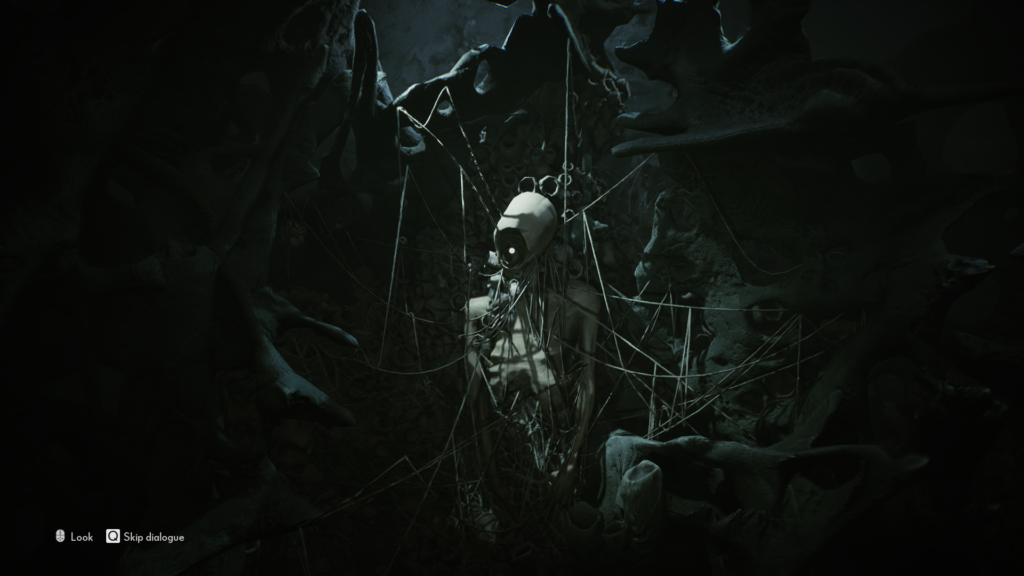
To finish things off, the experiences you come across in this game are still somewhat worthy of experiencing, but not for the asking price of fifty dollars. I played it on Xbox Gamepass, and that’s how I recommend people should try it, since I’d say it was worthy of my time, even if just for the unique visuals and soundtrack. However, it’s the price they ask for to play this game that was the final straw that made me give it the verdict that I did.
Verdict
Not Quite There
Did you enjoy this review? Check out our reviews of Haven and The Pathless. Do you enjoy what we do? Check out our Ko-Fi, and consider dropping us a coffee! If you want to do what we do, we’re looking for new writers and editors! Fill out the form here if you’re interested. Thanks!
Game reviewed by Freelance7. Game played on Xbox Game Pass.
